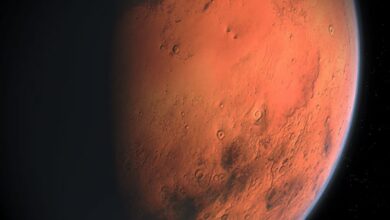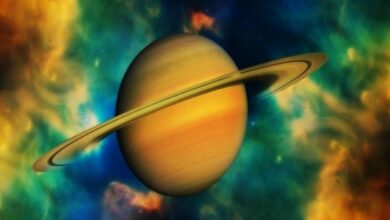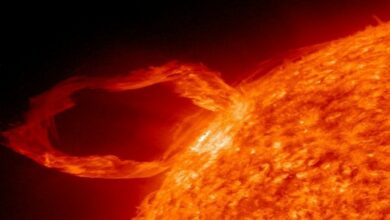Science
-
Research reveals 45,000 marine species are at risk due to climate change
Brisbane: One of the most unfortunate effects of climate change is the impact it has on the species of marine life. University of Queensland researchers and global marine experts reviewed marine biology…
-
New type of star covered in Helium burning ashes discovered by Astronomers
Tubingen: The universe is vast and has a lot of mysteries hidden in it. Discoveries made by astronomers help us in understanding our universe a little better. Now, a team of German…
-
NASA releases first images from its new X-ray mission
Washington: US space agency NASA has released the first science images from its new Imaging X-ray Polarimetry Explorer — IXPE — that was launched on December 9, 2021. NASA said that all…
-
Lichens in danger of losing evolutionary race with climate change: Study
Chicago: Algae are a lot more than just the green scum that shows up on walls. These tiny plants, when teamed up with a fungus, form a composite structure called lichen. Lichens…
-
Study discusses distant galaxies and true nature of dark matter
Trieste: There is a vast spherical region made up of dark matter particles, at the centre of spiral galaxies. This region has two defining characteristics: a density that is constantly out to…
-
Countdown for launch of India’s ‘eye in the sky’ satellite begins
Chennai: The Indian space agency on early Sunday morning began the countdown for the Monday morning launch of its PSLV-C52 rocket carrying the country’s radar imaging satellite RISAT-1A renamed as Earth Observation…
-
Astronomers detect new planet around closest star to our solar system
Santiago: Astronomers have found evidence of another planet orbiting Proxima Centauri, the closest star to our Solar System. This candidate planet is the third detected in the system and the lightest yet…
-
SpaceX’s Starship would reach orbit within 6 months: Musk
New Delhi: Reiterating that humanity needs to become multi-planetary, Elon Musk said on Friday that the SpaceX Starship rocket will finally reach orbit this year. Designed to take people and cargo to…
-
Astronomers observe final moments of planetary remnants for the first time
Coventry: A white dwarf is known to be a small very dense star that is typically the size of a planet. It is formed when a low-mass star has exhausted all its…
-
Research shows how Mars lost its oceans
Tokyo: It is a well-known fact that Mars once had oceans in part due to a protective magnetic field similar to Earth’s. The layer of ice on the cap of the planet…
-
Aurorae in Saturn sky? It’s probably due to high altitude winds, says study
Leicester: Saturn is the sixth planet in the solar system which has extremely large and bright rings around it. Now, Leicester space scientists have discovered a never-before-seen mechanism fuelling huge planetary aurorae…
-
Study offers explanation for unusual motions in solar flares
Massachusetts: Solar flames are defined as an intense burst of radiation coming from the release of magnetic energy associated with sunspots. They are seen as bright areas on the sun and they…
-
Astronomers suggest that dying stars can give birth to planets
Washington: Planets are usually not much older than the stars in any galaxy, but a recent study by KU Leuven astronomers has discovered that a completely different scenario is also possible. The…
-
International Space Station will plunge into Pacific in 2031: NASA
Washington: The International Space Station (ISS) will continue its operations until 2030 and will plunge into the most remote point in the Pacific Ocean in 2031, NASA confirmed in a new transition…
-
Studies find when puffy planets lose atmospheres, they become super-Earths
Hawaii: Mini-Neptunes are a class of exoplanets, which are planets that orbit stars outside our solar system. These worlds, which are smaller, denser versions of the planet Neptune, consist of large rocky…













